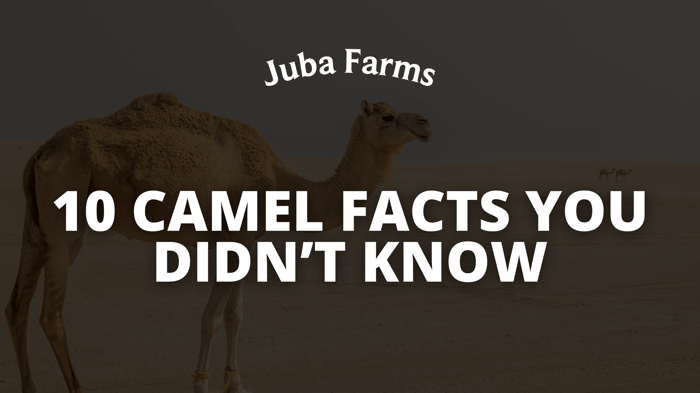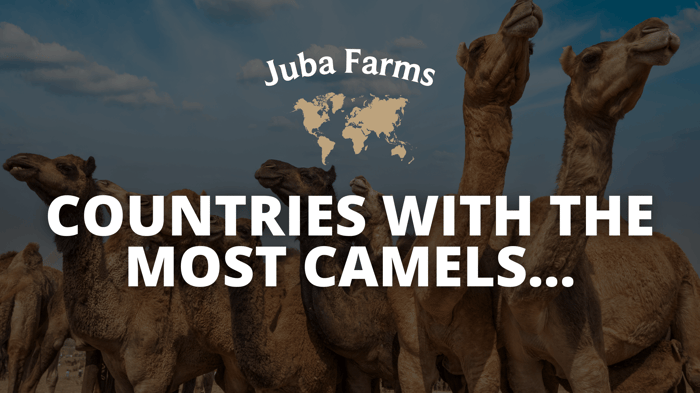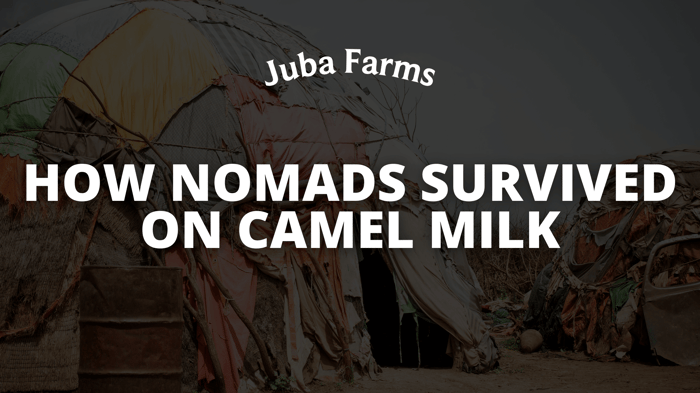Table of Contents
- 1. Camels Don't Actually Store Water in Their Humps
- 2. Camel Milk Is Closer to Human Milk Than Cow Milk
- 3. They Can Close Their Nostrils
- 4. Camels Have Three Sets of Eyelids
- 5. There Are Two Main Species of Camels
- 6. Camel Milk Stays Fresh Longer Than Other Milks
- 7. Camels Can Go for Weeks Without Water
- 8. Camels Have Unique Footpads
- 9. Camel Milk Was a Survival Staple for Nomads
- 10. Camels Communicate Through a Variety of Sounds
- Bonus Fact: Camels Were Integral to Ancient Trade Routes
- Camel Facts in East African Culture
- Camel Milk in Today's Wellness World
- Final Thoughts on Facts About Camels
Camels are often admired for their endurance and adaptability, but there's a lot more to these desert dwellers than meets the eye. If you're looking for surprising facts about camels, you're in for a treat. From their extraordinary eyelashes to their nutritious milk, these remarkable animals are full of secrets waiting to be discovered.
Whether you're interested in the nutritional roots of camel milk or just curious about how these animals thrive in extreme environments, here are 10 fascinating facts about camels that might just change how you see them forever.
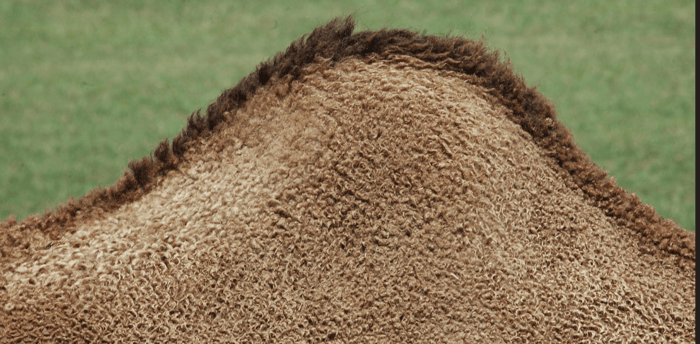
1. Camels Don't Actually Store Water in Their Humps
One of the most surprising facts about camels is that, contrary to popular belief, they don't store water in their humps. Their humps are made of fat, which they can metabolize into energy when food is scarce. However, this adaptation also helps with thermoregulation by keeping the rest of their bodies cooler.
Camels do store water in their bloodstream and tissues. In fact, they can drink up to 40 gallons of water in one go and retain it efficiently. It's one of the most mind-blowing facts about camels that continues to fascinate scientists.
2. Camel Milk Is Closer to Human Milk Than Cow Milk
Among the most intriguing facts about camels is that their milk contains no beta-lactoglobulin and only A2 casein, making it easier to digest for many people who are sensitive to cow milk. It's also lower in lactose and has higher levels of vitamin C and iron.
This is one reason why people in harsh climates survived on camel milk for centuries—it's highly nourishing and hydrating. Modern research continues to support its rich nutritional profile.
3. They Can Close Their Nostrils
When it comes to fascinating facts about camels, their desert adaptations are truly remarkable. One incredible feature is their ability to close their nostrils during sandstorms. Along with long eyelashes and bushy eyebrows, this helps protect them from harsh winds and airborne particles. This is definitely one of the most underrated facts about camels that showcases their evolutionary brilliance.
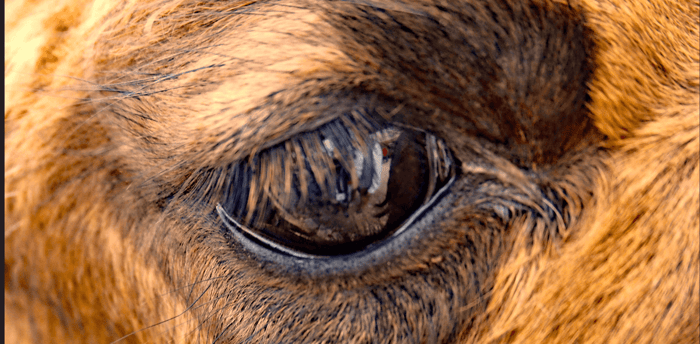
4. Camels Have Three Sets of Eyelids
To protect their eyes from sand and sun, camels have not one, not two, but three eyelids. One of them is a thin, transparent membrane that acts like a windshield wiper, clearing the eye without obstructing vision. This ranks among the most practical facts about camels that demonstrate their perfect adaptation to desert life.
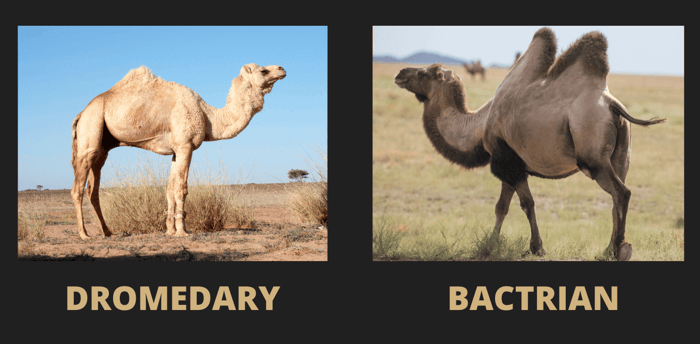
5. There Are Two Main Species of Camels
Most people know about the Dromedary camel with one hump, but there's also the Bactrian camel with two humps. Dromedaries are more common and thrive in hot, arid regions like East Africa and the Middle East. Bactrians are built for colder climates and are native to Central Asia.
One of the lesser-known facts about camels is that wild Bactrian camels are critically endangered, with only about 1,000 left in the wild.
6. Camel Milk Stays Fresh Longer Than Other Milks
Raw camel milk has natural antibacterial properties that allow it to stay fresh longer than cow or goat milk—even in warmer conditions. This is especially important in nomadic cultures where refrigeration wasn't available. Among the practical facts about camels, this unique characteristic of their milk has been crucial for desert survival.
7. Camels Can Go for Weeks Without Water
Thanks to their unique physiology, camels can survive for weeks without water. They minimize water loss by producing dry feces and very concentrated urine. Their bodies also tolerate up to 25% water loss, while most mammals would be in serious trouble after just 10%.
This amazing survival mechanism is one of the most studied facts about camels that continues to inspire researchers in water conservation science.
8. Camels Have Unique Footpads
Instead of hooves, camels have thick, padded feet that allow them to walk easily on sand without sinking. These footpads spread widely with each step, giving them stability on soft terrain. This distinctive anatomical feature is among the essential facts about camels that enable their desert lifestyle.
9. Camel Milk Was a Survival Staple for Nomads
In East Africa, the Middle East, and Central Asia, nomadic people often survived on camel milk when no other food was available. Its balanced composition of water, protein, fat, and micronutrients made it a reliable, nourishing option during long desert journeys.
Today, camel milk is still consumed in many traditional communities and has gained popularity as a functional food around the world. This historical significance represents one of the most culturally important facts about camels.
10. Camels Communicate Through a Variety of Sounds
Camels are surprisingly vocal. They grunt, moan, roar, and even make low-pitched gurgling sounds to communicate with each other. Each sound can signal different moods, from contentment to irritation.
They also display a strong sense of social bonding, particularly between mothers and calves, using both sounds and body language. This emotional intelligence is truly one of the most touching facts about camels that many people overlook.
Bonus Fact: Camels Were Integral to Ancient Trade Routes
One more fascinating historical fact about camels is their central role in the success of ancient trade. For centuries, camels made it possible for traders to cross vast desert landscapes, such as the Sahara and the Arabian deserts, as part of transcontinental trade routes like the Silk Road and Trans-Saharan routes. Their ability to travel long distances without water made them invaluable for transporting goods, including spices, salt, textiles, and even gold.
Their contribution to cultural exchange, economic growth, and even the spread of languages and religions is immeasurable. Without camels, large-scale trade in these regions would have been nearly impossible.
Camel Facts in East African Culture
In East Africa, especially in countries like Somalia, Ethiopia, and Kenya, camels are not only a livelihood but a symbol of wealth and heritage. A single camel can provide milk, meat, and even transportation in remote regions where modern infrastructure is limited.
The bond between East African communities and camels is deep-rooted. Children grow up learning how to care for camels, and entire families rely on them during droughts. Camel milk remains a cultural staple and an economic lifeline in these regions.
Ceremonies, dowries, and social status are also often tied to the ownership of camels. In this way, understanding these cultural facts about camels means also understanding their significance in the daily lives and identity of East African communities.
Camel Milk in Today's Wellness World
In modern wellness circles, camel milk is becoming a sought-after superfood. Its natural composition—rich in antioxidants, vitamins, and minerals—has caught the attention of nutritionists, food scientists, and health-conscious consumers alike.
Camel milk is now available in various forms, including raw, pasteurized, and freeze-dried powders. While it's not a cure-all, its nutritional profile supports its use as a functional food, particularly for people looking for dairy alternatives that are easier to digest.
Its mild taste and compatibility with coffee, smoothies, and cooking make it a versatile addition to any diet. Plus, with more domestic farms like Juba Farms producing camel milk right here in the U.S., access is better than ever.
Final Thoughts on Facts About Camels
Camels are more than just beasts of burden—they're ecological marvels, cultural icons, and even sources of life-saving nutrition. Whether you're fascinated by their ability to survive harsh climates or intrigued by the rising interest in camel milk, one thing's for sure: camels are extraordinary animals with a lot more going on than most of us realize.
Each of these facts about camels reveals just how intricately designed these animals are to support life in some of the toughest places on earth. From their water conservation abilities to their nutritious milk, these remarkable creatures continue to captivate and benefit humanity.
Want to learn more about camel milk? Visit Juba Farms for premium, U.S.-sourced camel milk shipped straight to your door.




